SEARCH






|
|
|
|


Live interview conducted on the 6th of June by Editor Rob Darby
Kristian Schmidt is an internationally-acclaimed nature and high-fashion photographer, as well as a film-maker and producer of music videos, commercial productions, and television shows. Kristian may be best known for his “Whale Shark Series” of photography which was groundbreaking, ethereal, and beautiful. He brings together humans and animals in his work to promote wildlife conservation. He has been involved with the well-regarded animal conservation organization, WildAid, for more than a decade. Through his art, Kristian helps to raise awareness about the importance of wildlife and our relationship to nature.
Kristian sat down with us in a live interview conducted by phone from his home in New York, to discuss his past work, his currently running exhibition called “Hotaru”, as well as some of his future projects.
Thank you, Mr. Schmidt, for taking the time to talk to us today.
Happy to do it, and thank you for the opportunity to speak to 1X.
You have had a very successful multi-faceted career spanning the visual arts including film-making, videography, and photography. Can you describe what draws you to photography as a medium?
Photography allows me to be freer than film-making, for example. The crews needed for a photography project are generally smaller, and thus easier to manage. Also, there is less editing required in photography than in film-making so the entire process is more straightforward.
The advantage of simpler shoots is that it affords me more time to travel and time off to think about my next project.
What limitations or advantages does photography provide you in expressing your vision on a project?
Photography allows me to convey what I see. My goal is to evoke emotions and to allow people who might not otherwise have the ability to travel or see nature, to experience it through my work.
You are well-known for your beautiful, ethereal, and groundbreaking Whale Shark Series. Can you tell us a little about the inspiration for this project?
I was scuba diving at Isla Mujeres, Mexico and there are many whale sharks there. I dove with them and was blown away by their gentleness and beauty.
So, I found out about a place in the Philippines where there are many whale sharks and the water is warm and there is very little current, unlike at Isla Mujeres. I needed a crew to work underwater, and to find models who were beautiful, could hold their breath for a long time and who weren’t afraid of these huge whale sharks. It all came together beautifully. The crew was amazing. The warm, calm water was important since the models and crew could stay in the water longer and it permitted us to complete the shoot faster.
Was the Whale Shark Series the most difficult project for you logistically, or is there another that was even more challenging? How long did the project take to shoot?
Yes, the logistics were challenging, but as I said, we had this amazing crew who made it possible. The dresses that the models wore were very heavy when wet, and the models not only had to hold their breath and be aware of the whale sharks, but they also needed to find the right angles, facial expressions, body positions and light – to be beautiful while underwater, swimming, and interacting with the Whale Sharks. We found the most amazing model who was able to handle these challenges, no problem.
The shoot that was even more challenging was a shoot with the Manta Rays. It was a very technical shoot, done in the middle of the night when the Rays are active, in 40 feet of cool water, with no ambient light. So, the models were swimming in the dark and only when we illuminated the scene to photograph would we see the Manta Rays and the models together. That one was more difficult.
Did the “Whale Shark” project turn out the way you envisioned beforehand or did it evolve during the shoot itself?
The project evolved as I was shooting it. When you are photographing humans and animals together, you have to “let it happen.” So, like all of my projects, the result reflected what happened in the moment.
Ansel Adams writes about “pre-visualization” - he saw the image he wanted to create and set out to fulfil his vision. Others, like the French humanist photographer Henri Cartier Bresson spoke about “catching the decisive moment.” How would you describe your approach to photography?
My approach is “chaos.” I may come to a project with an idea of what I want, but since much of my work is with animal and human interaction, and since animals (and humans) do their own thing, the outcome is likely to be different from what I originally envisioned.
As you said, much of your work puts humans and wildlife together. For example, I loved your images of the young girl interacting with a Cheetah. Can you describe the process and challenges of executing this type of scene...safely!
Well, the series you are referring to was shot at a private concession in South Africa which takes in rescue cats, so the animals are bit tamer. Nevertheless, we had someone who knew the cats and their behaviours there to ensure that nothing went wrong. That shoot took us only 1 hour to complete. The young girl in the images was amazing. She was fearless!
What is it about putting humans and animals together that you find meaningful in your work? Are the humans or animals harder to control?
I put humans and animals together to remind us of our connection to nature. People get busy in their city lives, making money, etc. and they lose that basic connection to nature. Also, some people don’t have the ability to travel to nature, so I love to bring that experience to people through my work.
Humans are probably harder to control since in some ways they are less predictable. Animal behaviour is actually more predictable.
You have done a lot of work with WildAid. They are doing some very effective work in wildlife conservation. Can you describe why you are passionate about this organization’s mission?
I got involved with WildAid when I went to Africa and saw with my own eyes the impact of poaching. I knew I HAD to be part of the solution.
I have worked with a number of charities in my life, and WildAid is the most efficient. Their work is on point and they have the right ideas on animal conservation.
For example, we worked with Yao Ming to highlight Rhino poaching. This was impactful since Yao is revered in China and his support for WildAid changed public perception of the problem, and thus reduced demand for their tusks.
So, it is education that changes minds and that is what WildAid and my work is intended to do.
I have been associated with them for over 10 years and my work with them has definitely helped my career as well as allowing me to travel to many amazing places.
You have an exhibition called “Hotaru” running currently in New York. Can you describe this exhibition for us?
Yes, this a private exhibition in New York of my past and present work. It is also an opportunity to introduce, on a small scale, the concept for larger shows that will begin in the Fall and continue through next year in Shanghai, Paris, and other cities. These shows will marry technology and photography to create an interactive experience. Using various technologies, the animals in my photographs will move from piece to piece, and give the viewer the experience of “being there.” So rather than a static exhibition, I am trying to create what it is like to be in Africa, or to be in the ocean, interacting with the animal life.
What was your inspiration for this exhibition and what do you hope people take away from it?
“Hotaru” means “firefly” in Japanese. Fireflies are beautiful, they live very short lives, and they can only survive in “pure” nature. They seem like a perfect symbol for what I want to convey: that life is ephemeral, and we have only a short time here to experience nature. So, my inspiration is nature, conservation, and bringing to life our relationship to the animal world.
It seems as if technology is an important part of creating the experience of Hotaru. Are you a technology expert?
No, I have a team of people that do that. They bring my vision to life. I am not really a tech person myself.
Is there a dream project that you have in mind that you hope to realize someday?
I already have some new projects in development. I am working on a travel show that I will host, as well as some comedic work influenced by Japanese television shows and their humour.
I am also interested in doing an anti-gravity shoot in space or using Zero-g manoeuvrers. I am fascinated by volcanoes and lava as well, so I expect to do something that incorporates this into my work.
Is there any advice you can give to aspiring photographers?
Step outside the box and do your own thing. Try to find something original, although this is obviously hard to do.
Probably my biggest advice to someone trying to break into photography is to be as social as you can. Meet people and ask lots of questions. In my experience, projects are 30% actual shooting and 70% “social” – building a team, collaborating, etc.
When you aren’t working on a photography project, what do you like to do for fun?
For me, shooting a project is like being on vacation. The work is in the set-up. But when I am not travelling, I like to do normal things like hang out at home with my Golden Retriever.
In closing, if you had to summarize your career up to this point in one sentence, what would it be?
Well, this is more than one sentence, but…My career has been a “tornado of amazingness.” My work is my passion and I get to do what I love. I try to remember everything.
Thank you for your time and sharing your insights with us. Good luck with “Hotaru.”
 | Write |
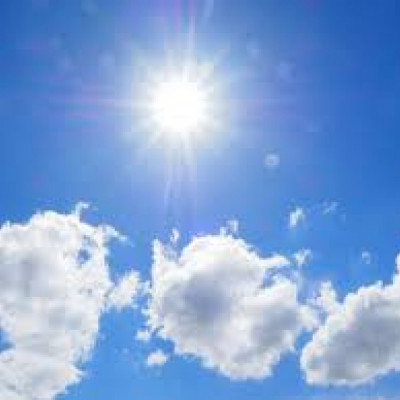 | Photo Argenta Awesome visual experience. Very interesting point of view and concepts. |
 | Ralf Stelander FOUNDER Just fantastic photography and very interesting insights! |
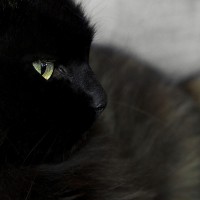 | Deborah Gugeri What amazing photography and what amazing animals within. Thank you for all your wonderful work |
 | Yvette Depaepe CREW Our pleasure to present such a great artist, dear Deborah! |
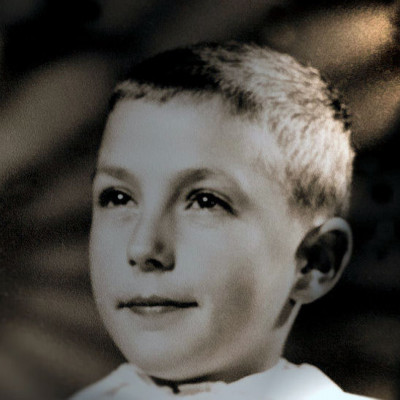 | Thierry Dufour PRO Fantastic work, splendid interview. Congratulations to Kristian. Thank so much to Yvette and Rob !!! |
 | Yvette Depaepe CREW It was our honour to have Kristian here on 1x, Thierry. Rob did a fantastic and not ever done live interview with such a great world known artist. We're grateful to Kristian for his fine collaboration! |
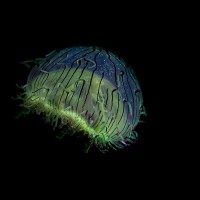 | David williams PRO Amazing work, great interview, Rob! The underwater work is mind blowing and I’m so happy to see it wasn’t “made” refreshing and inspiring. Great job! |
 | Rob Darby PRO It was a great privilege for me to talk with Kristian about his work and his current/upcoming projects. He is charming, articulate, creative, and his passion for wildlife conservation and our relationship to nature was infectious.
Thank you Yvette for the opportunity, and thank you Kristian for taking the time to share your vision with us. |
 | Yvette Depaepe CREW Glad you led this interesting live interview, Rob! Thanks a lot ....
Of course, big thanks to Kristian for his fine collaboration too!!! |
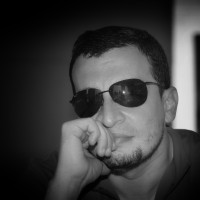 | Ahmed Thabet PRO Really, I am stunned, what a creative underwater photography work, amazing, thanks Kristian Schmidt Thanks 1X |
 | Yvette Depaepe CREW So proud to have this live interview here on 1x with the fantastic photographer and interesting personality Kristian Schmidt is! Thanks Kristian and thanks Rob for conducting this all so well. Cheers, Yvette |